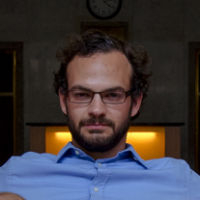Milwaukee residents are calling for more proactive community-based violence prevention strategies in the wake of the July 22 killing of 6-year-old Justin Evans Jr.
Evans, who was shot and killed outside his grandmother’s home near 23rd and Nash streets, is the youngest victim of the summer so far. In 2017, there have been 66 homicides; 85 percent have been shootings and 82 percent of victims have been African-American.
Only four days before Evans’ death, two young girls – a 6-year-old and 9-year-old – were shot during an exchange of gunfire near 39th and Burleigh that also injured two older men. The girls and both men survived.
Angel Lewis, Evans’ aunt, described the boy as an enthusiastic and caring older brother who loved school and thought often about what he wanted to do later in life.
"He had so much ahead of him," she said.
A prayer vigil and peace march were held Sunday for Evans. Mayor Tom Barrett, Common Council President Ashanti Hamilton and Milwaukee Police Department Chief Ed Flynn attended the gathering, along with about 50 community members.
But residents said the reaction was not enough. They drew comparisons between Evans’ death and the police shooting of Sylville Smith last August in Sherman Park, which led to two nights of unrest that brought national attention. Keith Martin, who attended the vigil, criticized the turnout for the event, as did Darrin Reasby, founder of Born2Dream.
Lewis and Martin called for the shooter to turn himself in. And Reggie Moore, director of the City of Milwaukee Office of Violence Prevention, asked that anyone with information come forward. But Reasby, Martin and Moore also said the central city black community must build relationships and provide positive examples for children in order to address violence at the root level.
Ameka Jacobs, a resident of 23rd Street, said, "When does ‘Black Lives Matter’ start?"
After graduation, Jabril returned to Milwaukee, falling back in love with the city he grew up in. While becoming involved in a growing arts and culture movement in the city, he was drawn back towards writing as a vessel for his own personal satisfaction and self-expression. Jabril has created two journalistic storytelling projects focused on his hometown - documenting the city's street festivals and telling the personal stories of regular people.


.jpeg)


